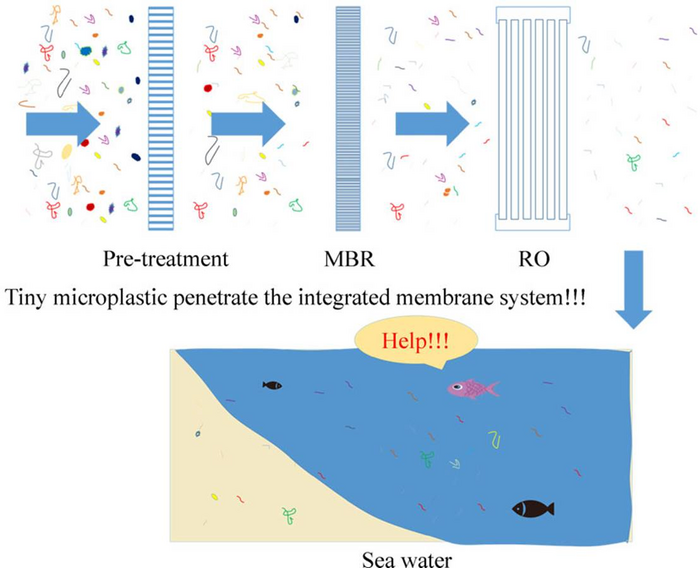A growing environmental pollution issue is microplastic, which is characterized to be less than 5 nm. Microplastics’ accumulation in different environments and ecosystems is caused by increased plastic waste from personal care products or the plastic industry.
 Image Credit: Ying Cai, Jun Wu, Jian Lu, Jianhua Wang, Cui Zhang.
Image Credit: Ying Cai, Jun Wu, Jian Lu, Jianhua Wang, Cui Zhang.
Microplastics have been found in over 2,000 marine organisms. The substantial quantity of chemicals expelled by microplastics can affect living beings and impend their health. Also, hydrophobic microplastics can adsorb on antibiotics, endocrine disruptors, and other organic pollutants present in the water—which has increased the aquatic environment pollution.
Hence, finding a way to avoid microplastics from entering the environment is still a difficulty.
Several research works have proven that a waste treatment plant is essential to expel several emerging pollutants, including microplastics, into the environment. Among them, the fast-developing membrane technology is a potential treatment method for removing various pollutants in the wastewater treatment process.
For NH4+-N, COD, organic pollutants, bacteria, and antibiotic resistance genes, membrane technology works with a great removal rate. The integrated membrane system (IMS) technology for reusing reclaimed water has gained huge attention with the water resources shortage and water pollution.
Could the wastewater treatment plant avoid the microplastics from getting into the marine environment, and what is the outcome of microplastics in the IMS system used for water recovery?
The fate of microplastics in conventional activated sludge system (CAS) and IMS system in a coastal reclaimed water plant was systematically examined by Prof. Jian Lu and Dr. Ying Cai from the Chinese Academy of Sciences and their team members to answer the above-mentioned questions.
Their study found that the IMS system can stop most microplastics from entering the marine environment and transform the wastewater into renewable water, eventually reducing ocean pollution and resolving the water resources shortage. This study was published online in Frontiers of Environmental Science & Engineering in 2022.
The fate of microplastics in IMS in a coastal reclaimed water plant was studied in this research. After membrane bioreactor (MBR) treatment, the microplastics removal rate in the IMS system reached 93.2%, whereas that increased further to 98.0% after the reverse osmosis (RO) membrane process.
In MBR effluent, the microplastics’ flux was reduced from 1.5 × 1013 MPs/d to 10.2 × 1011 MPs/d, whereas that of the RO treatment was reduced to 2.7 × 1011 MPs/d. The IMS system application in the reclaimed water plant can avoid the discharge of most microplastics into coastal water.
These results indicated that the IMS system was more successful in microplastics removal than CAS. Nevertheless, small-scale fiber plastics (<200 μm) can break through the RO system, which is not overlooked.
The fate of microplastics in the conventional water treatment process and the membrane technology of classic reclaimed water plant in coastal zone was systematically and comprehensively examined in this study.
The findings suggest that the microplastics removal rate by IMS is much greater than that by the conventional wastewater treatment process. The IMS introduction into coastal wastewater treatment plants can stop most microplastics from entering the marine environment and transform the wastewater into renewable water, eventually decreasing ocean pollution and resolving water resources shortage.
Journal Reference:
Cai, Y., et al. (2022) Fate of microplastics in a coastal wastewater treatment plant: Microfibers could partially break through the integrated membrane system. Frontiers of Environmental Science & Engineering. doi.org/10.1007/s11783-021-1517-0.